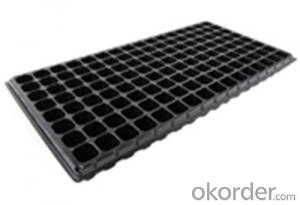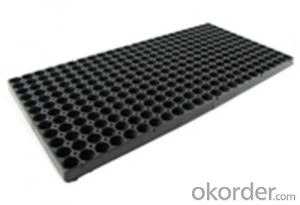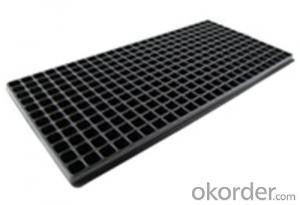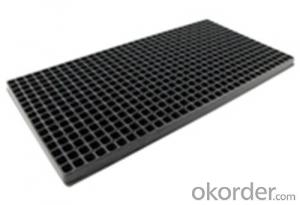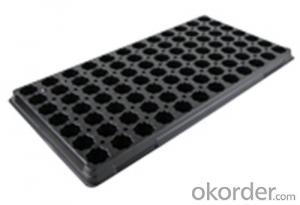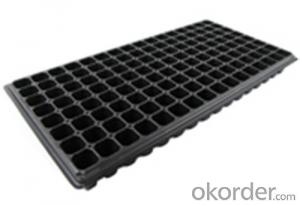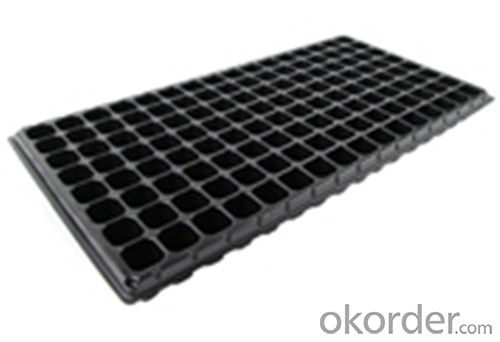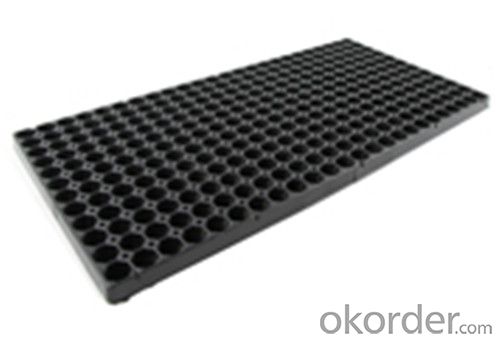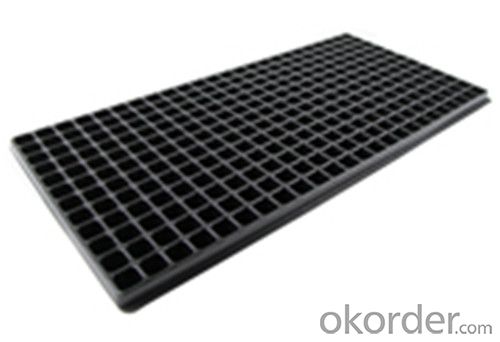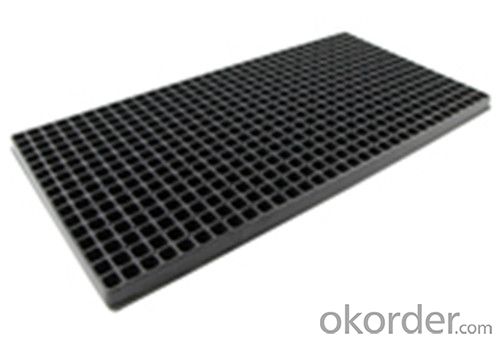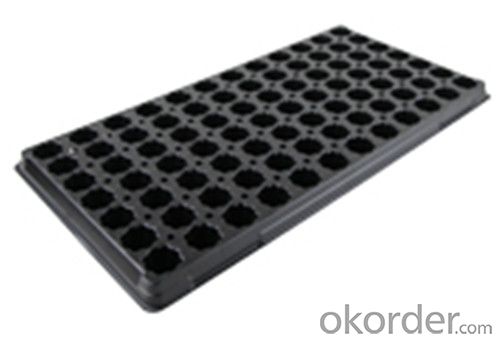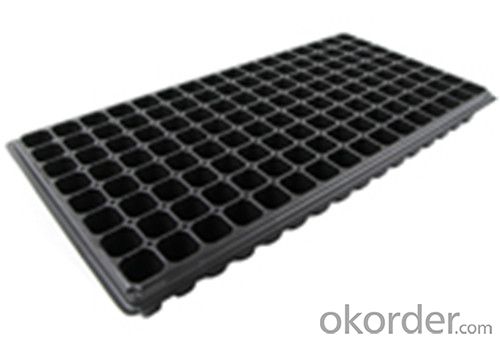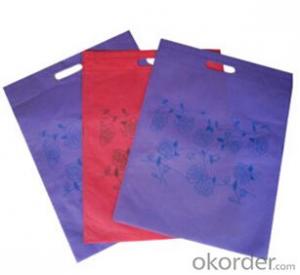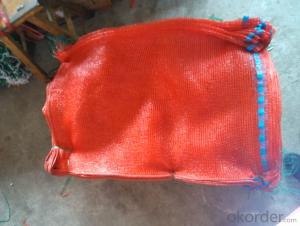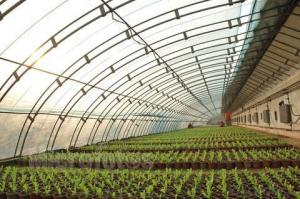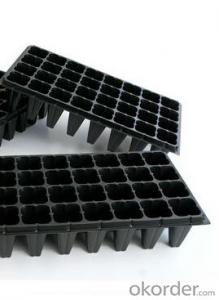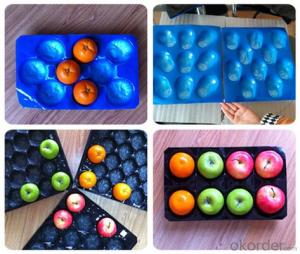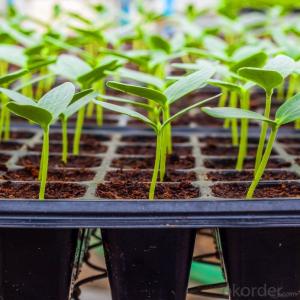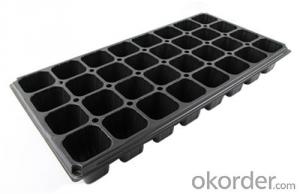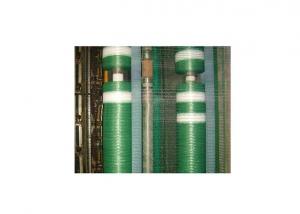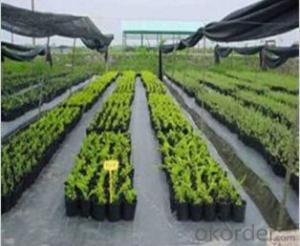Plastic Seed Tray Plug Tray for Green House Nursery Plug Tray Square
- Loading Port:
- China main port
- Payment Terms:
- TT OR LC
- Min Order Qty:
- 1000 pc
- Supply Capability:
- 100000 pc/month
OKorder Service Pledge
OKorder Financial Service
You Might Also Like
Structure of the seed tray:
Top quality and competitive price.
Variety design and good appearance.
Easy to use, and remove.
Durable and reusable.
Eco-Friendly.
Description Main Features of the seed tray:
Ideal for Starting seeds and Transplanting Seedling.
Suitable for both manual and automatic planting.
Suitable for Propagating Vegetables, Flowers and other plant from seed in green-house or indoors.
Seed Tray Images:
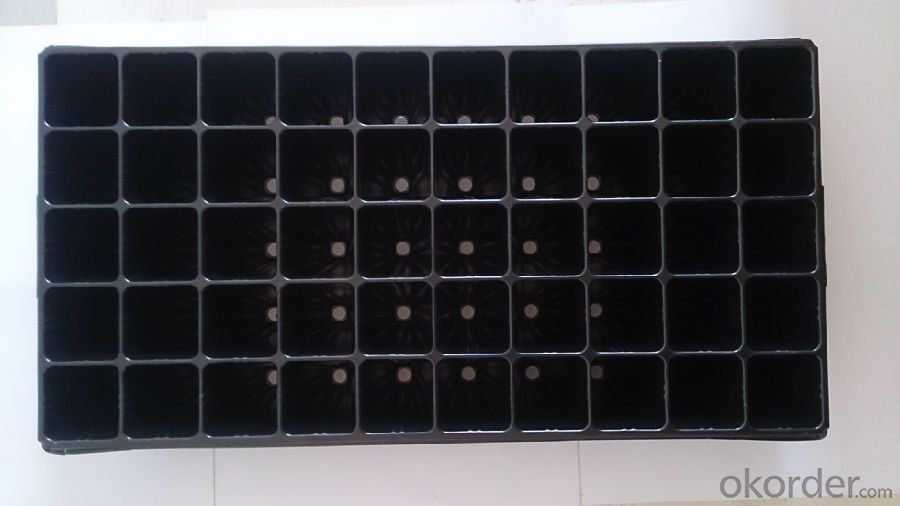
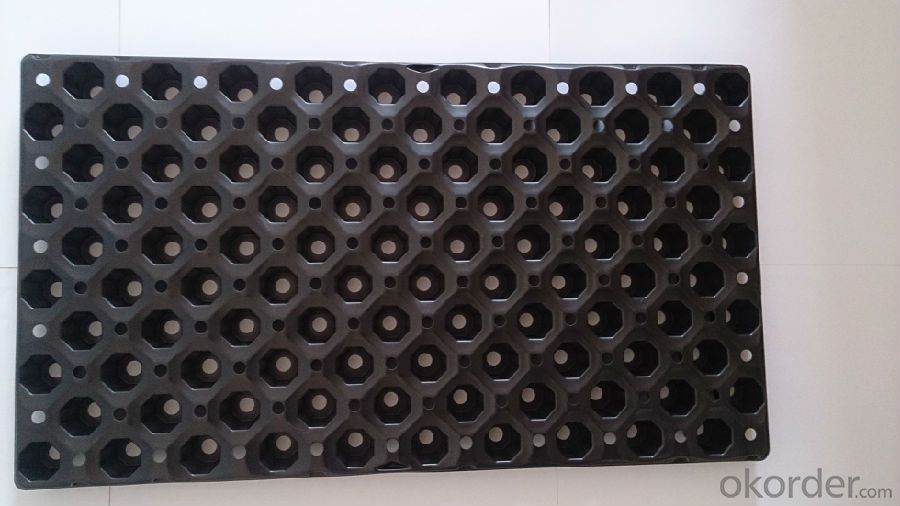
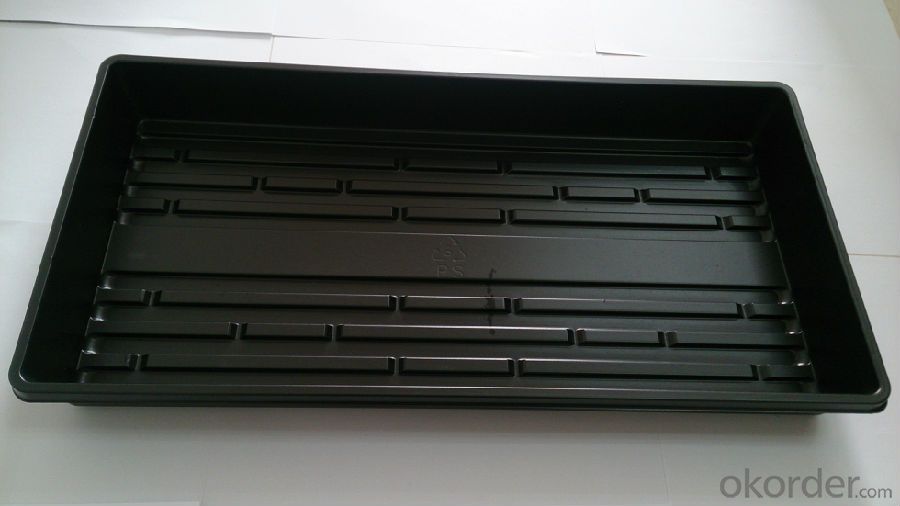
Seed Tray Specification:
Material: HIPS/PVC
Thickness: 0.5mm-1.5mm, Standard:1mm
Weight: 80g(±5)g-230g(±5)g, Standard weight:155g(±5)g
Size: length:490mm-540mm, width:190mm-345mm,depth:25mm-150mm
Standard:54mmX28mm
Cell count: 18-512
Package: carton
Using time: 8-10 times
FAQ:
Q:How Can I Get A Sample?
A:You can get samples by communicate with our export sales.
Q:How Long Is Delivery?
A:Delivery time will be 7-25 days according to order quantity.
Q:What Is The MOQ?
A:Our MOQ is 1*20FT container quantity, allow to mix several items.
Q:What Is Our Normal Payments Terms?
A:Our normal payment terms now is T/T, L/C or Western Union,Papal.
Q:How Do I Order Your Products?
A:You can check our website for any items you interest and you can also get communication with our export sales and order for it accordingly.
Q:What Kinds Of Material We Use In Our Product?
A:Our plastic flower pots use material such as PP polymer or PE polymer.
Thickness vs. Weight
Thickness of trays are from 0.5mm to 1.0mm.
1.0mm: 155g±5g; 100pcs/ctn.
0.9mm: 140g±5g; 120pcs/ctn.
0.7mm: 110g±5g; 150pcs/ctn.
0.6mm: 95g±5g; 180pcs/ctn.
0.5mm: 80g±5g; 200pcs/ctn.
Using time:
thickness of 0.5mm can be used 1 to 2 times.
thickness of 0.6mm can be used 3 to 4 times.
thickness of 0.7mm can be used 5 to 6 times.
thickness of 0.8mm can be used 7 to 8 times.
thickness of 0.9mm can be used 8 to 9 times.
thickness of 1.0mm can be used 8 to 10 times.
- Q: Are there nursery trays with built-in humidity control systems?
- Yes, there are nursery trays available in the market that come with built-in humidity control systems. These trays are designed to regulate and maintain the optimum humidity levels required for healthy plant growth.
- Q: What are the different types of ground covers used in agriculture?
- There are several types of ground covers used in agriculture, including mulch, plastic film, cover crops, and living covers such as grass or legume species. Each type serves different purposes, such as weed suppression, moisture retention, erosion control, or enhancing soil fertility.
- Q: Do nursery trays come in different colors?
- Yes, nursery trays come in different colors.
- Q: What are some ground cover options for slopes?
- Some ground cover options for slopes include creeping juniper, creeping phlox, crown vetch, periwinkle, and creeping thyme. These plants have trailing or spreading growth habits that help stabilize the soil and prevent erosion on slopes.
- Q: I have a neighbor that will burn almost anything in his outdoor fire. Isn't this dangerous. One day I smelled plastic melting. Isn't that dangerous? Can't melting plastic cause cancer? I'm concerned anddon't know how to tell him in a nice way!
- Surferch... is right. It depends on the plastic but some plastics will certainly produce toxic gases when burned. In most cases, the human nose can smell these fumes at levels that are well below where the exposure becomes harmful but, it depends. For example, when teflon is burned, it produces hyrofluoric acid (HF) vapor. As far as I know, the recommended maximium safe exposure level to HF is virtually zero. I suggest you ask him if he has a permit for burning. It was not too long ago that almost every house had a burn barrel out back. A lot of household waste was burned, food scraps were put in the compost, the metal was collected and taken to the scrap metal dealer.
- Q: What are the different types of agricultural plastic planters and pots?
- There are several types of agricultural plastic planters and pots available for different purposes in farming. Some common types include seedling trays, nursery pots, hanging baskets, grow bags, and hydroponic systems. Each type serves a specific function, such as starting seeds, raising young plants, or providing a suitable growing environment for hydroponic crops. These plastic planters and pots are designed to be durable, lightweight, and provide proper drainage and aeration for healthy plant growth.
- Q: Are nursery trays suitable for hydroponic gardening?
- Yes, nursery trays can be suitable for hydroponic gardening. They provide a convenient and cost-effective solution for starting seeds or growing small plants in a hydroponic system. However, it is important to ensure that the trays are made from food-grade materials and have proper drainage holes for optimal water circulation and nutrient absorption. Additionally, the size and depth of the nursery trays should be suitable for the specific hydroponic setup and the plants being grown.
- Q: This question asks whether the use of plastic products in agriculture can lead to health issues for farmers and consumers.
- <p>Yes, agricultural plastic products can potentially cause health problems for both farmers and consumers. Farmers may be exposed to harmful chemicals during the production, use, and disposal of these plastics. Residual chemicals can contaminate soil and water, leading to exposure through ingestion or inhalation. Consumers might be affected by chemicals leaching into food from plastic packaging or through the presence of microplastics in the food chain. Additionally, the breakdown of plastics into microplastics can accumulate in the environment, potentially entering the food chain and posing a risk to human health.</p>
- Q: Are there any best practices for using agricultural plastic products?
- Yes, there are several best practices for using agricultural plastic products. Some of these include proper disposal and recycling of plastic materials to minimize environmental impact, using high-quality and durable plastic products to ensure longevity, careful handling and storage to prevent damage or degradation, and regular inspection and maintenance to identify and address any issues or potential hazards. Additionally, it is essential to follow manufacturer guidelines and recommendations for specific plastic products to maximize their effectiveness and efficiency in agricultural applications.
- Q: Can ground cover be used to create an edible garden?
- Yes, ground cover can be used to create an edible garden. In fact, using edible ground cover plants is a practical and efficient way to maximize space and yield in a garden. Some common examples of edible ground cover plants include strawberries, thyme, oregano, and mint, which not only provide a lush green cover but also offer tasty and flavorful additions to meals.
Send your message to us
Plastic Seed Tray Plug Tray for Green House Nursery Plug Tray Square
- Loading Port:
- China main port
- Payment Terms:
- TT OR LC
- Min Order Qty:
- 1000 pc
- Supply Capability:
- 100000 pc/month
OKorder Service Pledge
OKorder Financial Service
Similar products
Hot products
Hot Searches
Related keywords
